The week of November 10-16 brought together a mix of deep industry introspection and decisive product-strategy pivots. At Autocar Professional’s India EV Conclave, government officials and top OEM leaders converged on a unified message: India’s electrification momentum is real, but long-term competitiveness hinges on accelerating R&D, fixing the battery supply chain’s China dependence, building robust charging infrastructure, and urgently scaling talent for EV manufacturing and service.
Against this policy and ecosystem backdrop, Tata Motors revealed a meaningful broadening of its propulsion roadmap–studying CNG and hybrid options for larger cars and SUVs amid shifting consumer economics and tightening CAFE 3 norms. At the same time, the premium motorcycle industry raised alarm bells: Royal Enfield cautioned that the 40% GST slab on >350cc bikes risks derailing domestic demand and future India-for-world investments, adding new friction to an already sensitive market.
Together, the developments offered a snapshot of an industry balancing short-term regulatory pressures with long-term bets on technology, localisation, and global competitiveness.
Here’s the detailed round-up of all major developments from this week:
‘Two Strong Independent Companies’: N. Chandrasekaran Says Tata Motors Ready for Next Growth Curve
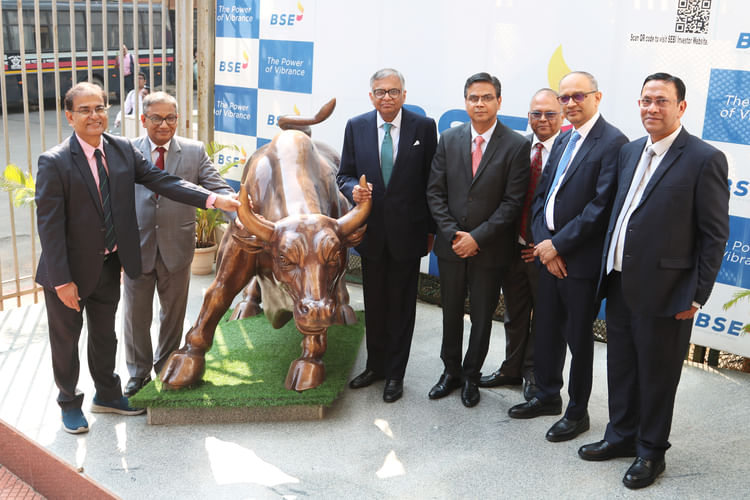
In a move that marks the most significant restructuring in its modern history, Tata Motors has formally listed its Commercial Vehicles Company (TMCV) on the Bombay Stock Exchange — a separation that Chairman N. Chandrasekaran described as “a defining moment in Tata Motors’ journey and a significant milestone for the Tata Group.”
The listing is not just a symbolic event but a strategic reorganisation, seven to eight years in the making, designed to create two financially independent, operationally focused entities. The goal: unlock value, sharpen accountability, and accelerate investments in new-age mobility technologies.“It was clear to me eight to nine years ago that this company had to have a different path,” Chandrasekaran said. “It has had its heydays, and it has had its problems. We had to go through a major transformation journey, which we did.”
Tata Motors’ Shailesh Chandra Rejects Weight-Based Small Car Relief Under CAFE
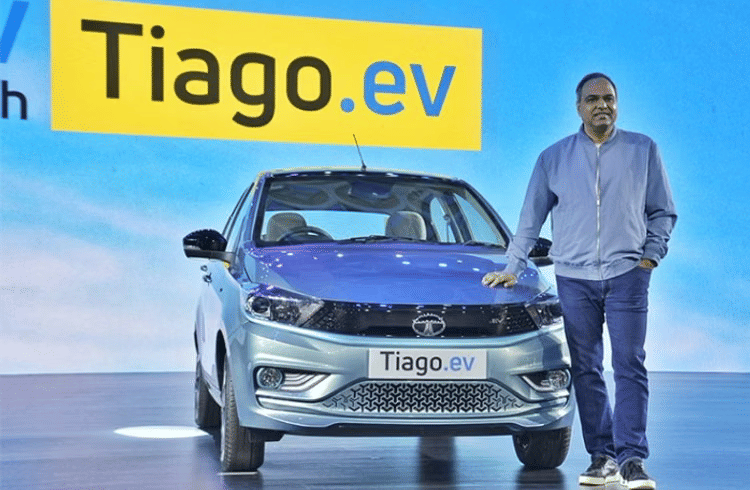
Tata Motors Passenger Vehicles MD & CEO Shailesh Chandra has taken a firm stand against proposals to dilute CAFE norms for small cars, calling any weight-based relaxation “unjustified, unsafe, and misaligned with India’s green mobility goals.”
Chandra’s strong remarks came during Tata Motors’ Q2 FY26 earnings call, amid industry discussions around easing CAFE requirements for smaller, more affordable vehicles through a new 909 kg weight threshold.
Tata Motors PV Expects Industry-Leading Growth in Second Half of FY26
Tata Motors Studying CNG and Hybrid Options for Vehicles Above 4 Metres
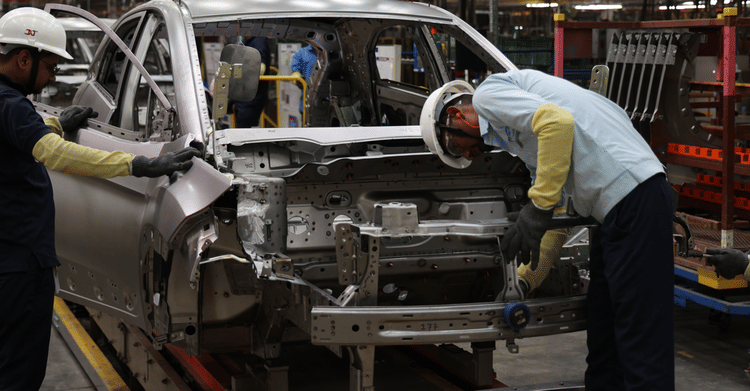
Tata Motors Passenger Vehicles Ltd is evaluating both CNG and strong hybrid powertrains for its larger cars and SUVs, signalling a calibrated diversification of its propulsion strategy beyond the sub-4-metre space at a time when the industry is seeing a sharp shift towards lower running-cost powertrains and tighter fuel-efficiency norms under CAFE 3.
The move comes as rival Maruti Suzuki has expanded CNG into the premium segment with models such as the Victoris, which features an underbody CNG, demonstrating growing customer acceptance for CNG in larger SUVs.
JLR Cuts Down FY26 Outlook as Cyber-Attack Disruptions Drag Performance; Recovery Expected in Q4
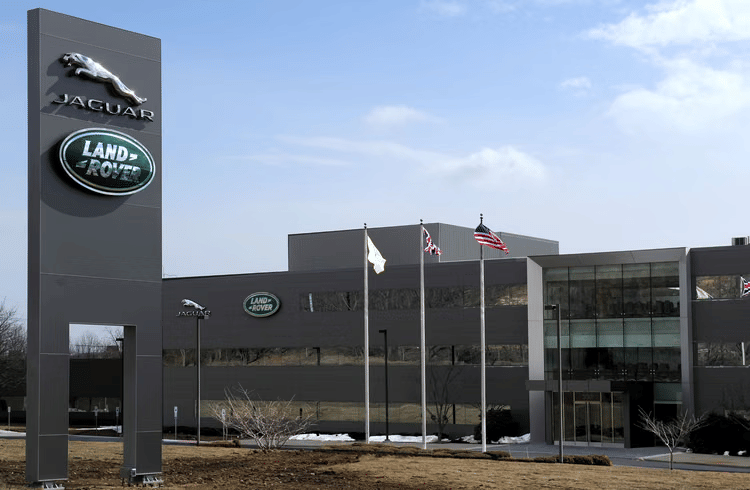
British luxury car brand Jaguar Land Rover (JLR) has revised its FY26 guidance downward after a severe cyber-attack and subsequent production shutdown triggered significant losses across two quarters, even as the carmaker ramps up operations to normal levels. According to PB Balaji, Group CFO of Tata Motors, production has only recently begun returning to full capacity, but the lost weeks cannot be recovered within the year, resulting in a weaker-than-expected Q3 outlook.
“We are now starting to hit our full rate of production. But we will not be in a position to catch up on the lost production weeks in the rest of the year. And therefore, that’s the reason you’re finding that Q3 will be a weak quarter,” PB Balaji said. He added that in Q4, the company should get back to “full normalcy” in terms of numbers. “Hence, we have revised the guidance downwards, and that’s what we hope to improve upon as production stabilizes,” he added.
Cyber-Attack Pushes JLR Into £485m Quarterly Loss; Tata Motors CFO Says Systems “Hardened”
Tata Motors Unveils Production-Ready Sierra Ahead of November 25 Launch
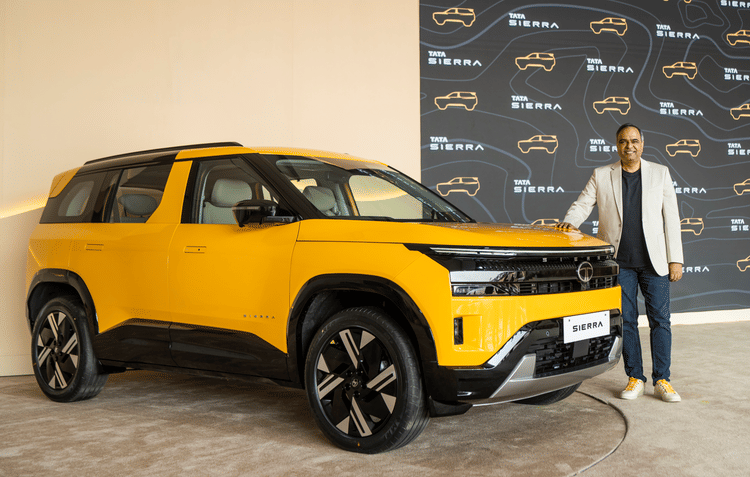
Tata Motors has unveiled the production-ready version of the Tata Sierra at the Sierra Brand Day event in Mumbai, marking the return of one of India’s most recognisable SUVs. The company traced the Sierra’s evolution from its 1991 debut to its new-generation model, which will be officially launched on November 25, 2025.
At the event, Martin Uhlarik, Vice President and Head of Global Design at Tata Motors, said the Sierra continues to represent innovation and aspiration in the Indian automotive space. He noted that the new model maintains the silhouette of the original Sierra while adapting it for current design and technology requirements.
Petrol-powered Tata Safari, Harrier to launch on December 9
Maruti Suzuki Recalls 39,506 Grand Vitara SUVs Over Fuel Gauge Fault
Higher GST on Big Bikes May Stall Investments, Curb Manufacturing Scale: Royal Enfield Cautions
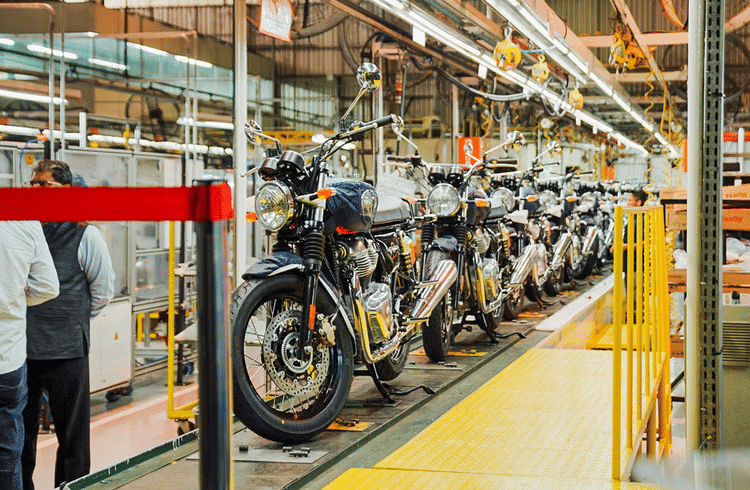
Royal Enfield has warned that India risks losing its advantage in the global mid-size motorcycle market if the government does not reconsider the steep 40% GST levied on models above 350cc. The company said the sharp disparity in tax rates–18% for motorcycles up to 350cc and 40% for anything above–could suppress demand, reduce scale, and ultimately weaken investment in future products.
“The reduction of the GST rate to up to 350cc has really helped in getting the demand. In more than 350cc the uptake is slightly lower, even though the bounce rate is better. It is picking up,” B. Govindarajan, Managing Director of Eicher Motors Limited (EML) and CEO of Royal Enfield, said during Q2FY26 earnings call.
Royal Enfield Bullish on FY26 Sales; Post-GST Demand Holding Firm
Eicher Motors Expects Steady Growth in CVs in H2 as GST Reform, Infra Push Aid Demand
CV Makers Push for Pragmatic Emissions Rules
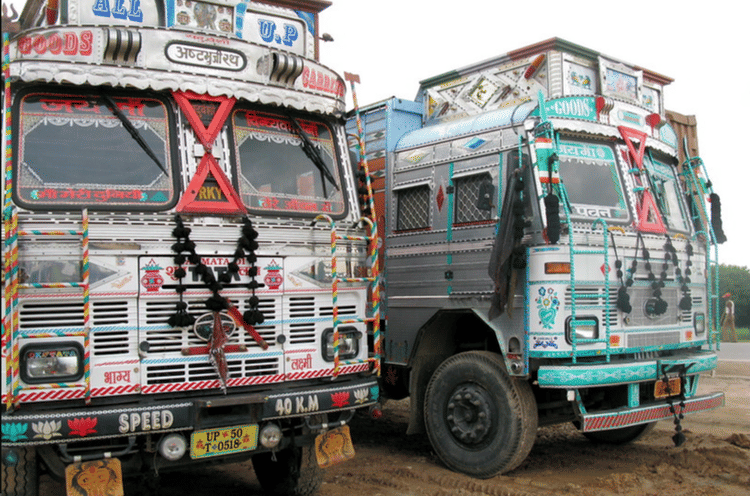
India’s commercial vehicle sector, which acts as the economic artery of the nation, is currently navigating a complex regulatory landscape. While manufacturers, including Tata Motors, are ramping up efforts in electrification and decarbonisation, the immediate challenge lies in defining the metrics for traditional internal combustion engines. This struggle came into sharp relief during Tata Motors’ recent financial briefing, where management detailed its unified industry stand on the proposed Corporate Average Fuel Economy (CAFE) norms.
CAFE norms require manufacturers to meet specific fleet-wide efficiency targets, a key policy lever used globally to curb carbon dioxide (CO₂) emissions. However, the commercial vehicle industry has argued that applying simple laboratory-based standards measures often designed for cars does not accurately reflect the rigorous and varied conditions under which trucks operate.
Tata Motors Invests Additional Rs 134 Crore in Freight Tiger
Ashok Leyland Shifts its UK Electric Bus Production to RAK
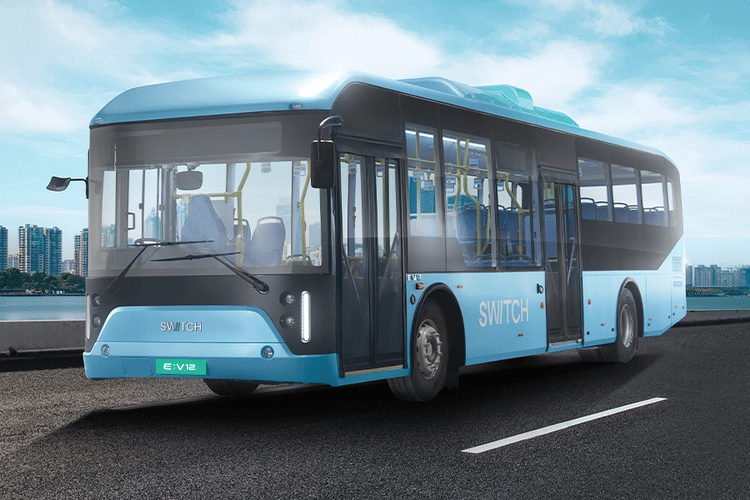
Ashok Leyland, through its electric vehicle (EV) subsidiary Switch Mobility, is undertaking a calculated realignment of its global manufacturing footprint, strategically moving the production base for its electric buses from the United Kingdom to Ras Al Khaimah (RAK) in the United Arab Emirates.
The company management led by Shenu Agarwal, MD & CEO of Ashok Leyland and K.M. Balaji, CFO of the company clarified that the decision was a direct result of the lack of viability at the former UK facility. After months of evaluation, the company decided to shut down its facility in Sherburn (UK). This restructuring comes even as Switch India has reported positive earnings, achieving PAT-positive status (meaning profitable after tax) in the first half of the current financial year.
Diversification Cuts Ashok Leyland’s Break-Even Cost
If Demand Delivers, Ashok Leyland’s Battery Push Could Touch Rs 10,000 Crore

India’s commercial vehicle giant Ashok Leyland’s proposed investment in domestic battery manufacturing could potentially reach around Rs 5,000–10,000 crore over the next 7–10 years.
This range is directly contingent on future market dynamics, specifically how the EV market or the battery energy storage system market behaves in India in the future, stated Shenu Agarwal, MD & CEO of Ashok Leyland, in a post-results briefing with the media.
The company had earlier pegged the investment at around Rs 5,000 crore during the same period.
Ashok Leyland Sets a Sights on 25,000 Export Units
Cabinet Approves Royalty Rate Rationalisation for Critical Minerals

The Union Cabinet has approved the rationalisation of royalty rates for four critical minerals essential for green energy applications and high-tech industries.
The revised rates establish caesium at 2% of average sale price on metal content, graphite at 2-4% on ad valorem basis depending on carbon content, rubidium at 2% on metal content, and zirconium at 1% on metal content.
The decision aims to facilitate the auction of mineral blocks containing these elements while simultaneously unlocking associated critical minerals such as lithium, tungsten, rare earth elements and niobium.
Yamaha India Launches XSR155 at Rs 1.5 Lakh, Unveils First EVs AEROX-E and EC-06
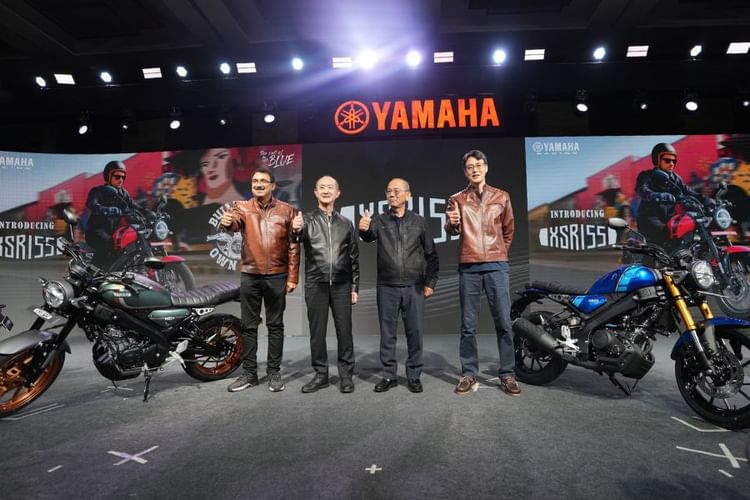
India Yamaha Motor Private Limited has launched the XSR155 motorcycle, marking the brand’s entry into the modern retro sport segment in India. The company simultaneously unveiled its first electric vehicles for the Indian market—the AEROX-E and EC-06—while expanding its FZ portfolio with the new FZ-RAVE model.
The XSR155, priced at Rs 1,49,990 (ex-showroom Delhi), represents Yamaha’s expansion in the premium motorcycle category. The model features a 155cc liquid-cooled engine with Variable Valve Actuation, producing 13.5 kW of power and 14.2 Nm of torque. Built on Yamaha’s Deltabox frame, it includes upside-down front forks, dual-channel ABS, and traction control. The motorcycle is available in four colour options with two accessory packages—Scrambler and Café Racer.
How a Stalled Bike Rally in Lucknow Gave Birth to the World’s Largest Helmet Empire
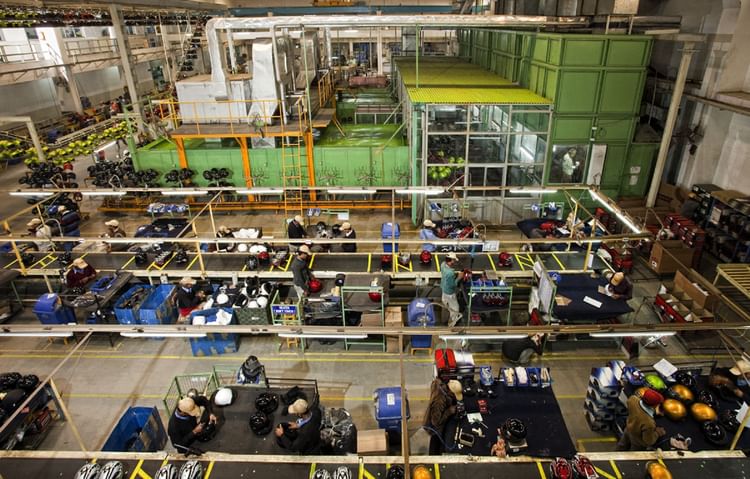
Zomato, India’s biggest food delivery company, had a problem: How do you get lakhs of delivery partners to wear helmets while on duty?
The challenge fell to Studds Accessories, India’s largest two-wheeler helmet maker. The initial solution seemed simple enough: provide riders with helmets equipped with a Bluetooth connection to their phones, ensuring real-time data flow to Zomato’s management. An electrical connection was embedded in the buckle, closing the circuit and signaling that the helmet was theoretically “worn”.
Earnings
Tata Motors PV Q2 Hit by JLR Cyber Shock; One-Time Gain Masks Underlying Loss
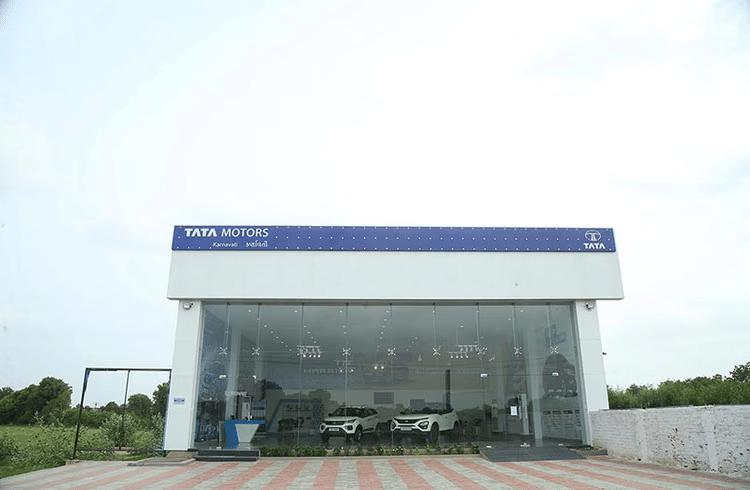
Tata Motors Passenger Vehicles Ltd. on Friday reported weakness across key earnings metrics for the September quarter, due to the significant impact of the cyber incident at JLR. However, the automaker’s consolidated bottom line came in at ₹74,129 crore, up sharply from ₹3,521 crore in the year-ago period. The jump was purely a result of a notional gain of ₹82,600 crore from the disposal of discontinued operations.
According to Tata Motors, during a demerger, the accounting standards require companies to record assets at fair value. In the company’s case, the commercial vehicle business being demerged was valued at around ₹94,000 crore by an independent assessor, while its book value stood at roughly ₹11,000 crore. The difference was recorded as an exceptional gain in the profit and loss statement.
Tata Motors Commercial Vehicles Reports ₹1,021 Crore Loss in Q2 FY26 on Investment Impairment
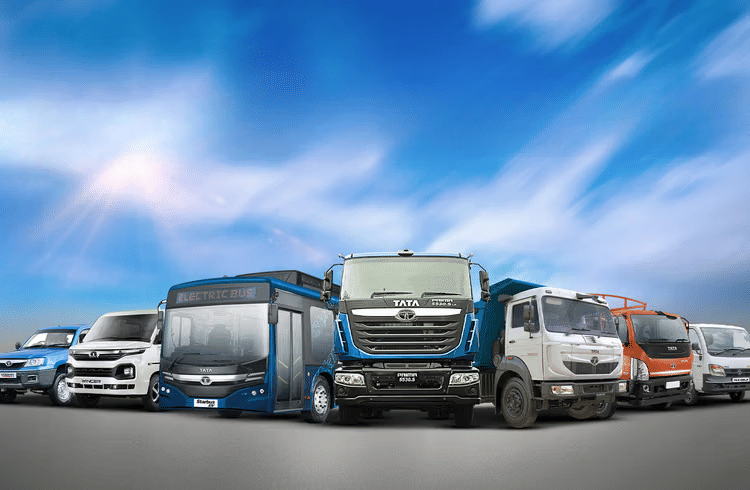
Tata Motors Ltd, the newly listed commercial vehicles entity following its demerger from the passenger vehicles business, reported a standalone net loss of ₹1,021 crore for the quarter ended September 30, 2025, compared to a profit of ₹643 crore in the same period last year.
Revenue from operations for Q2 FY26 stood at ₹16,861 crore, up 8.6% from ₹15,518 crore in Q2 FY25.
The company’s loss was primarily driven by a one-time provision of ₹2,355 crore for impairment of investments in subsidiary and associate companies, along with mark-to-market losses of approximately ₹2,000 crore on recently listed investments in Tata Capital.
Hero MotoCorp Reports Record Revenue and PAT in Q2 FY26
Hero MotoCorp posted its highest ever quarterly revenue and profit after tax for the second quarter of FY26. The company reported standalone revenue from operations of Rs 12,126 crore for Q2 FY26, marking a growth of 16% over Rs 10,463 crore in the corresponding quarter last year. Standalone net profit after tax stood at Rs 1,393 crore, up 16% year-on-year.
For the first half of FY26, the company recorded revenue of Rs 21,705 crore, reflecting a 5% increase over Rs 20,607 crore in H1 FY25. The profit after tax for the half-year period was Rs 2,519 crore, showing an 8% growth.
Eicher Motors Consol Sales up 45% in Q2FY26, PAT up 25%

Eicher Motors Ltd reported a strong performance across most earnings parameters in the September 2025 quarter, marking its best-ever quarterly results. The company’s consolidated net profit rose 25% year-on-year to ₹1,369 crore, supported by a 45% jump in revenue to ₹6,171.59 crore, led by Royal Enfield’s robust sales and festive tailwinds aided by the GST 2.0 reforms.
Eicher, which manufactures motorcycles under the Royal Enfield brand and commercial vehicles through its VE Commercial Vehicles (VECV) joint venture with the Volvo Group, continued to see strong traction in both businesses.
Motherson Posts 15% Jump in Q2 Profit, Revenue Rises 8.5%
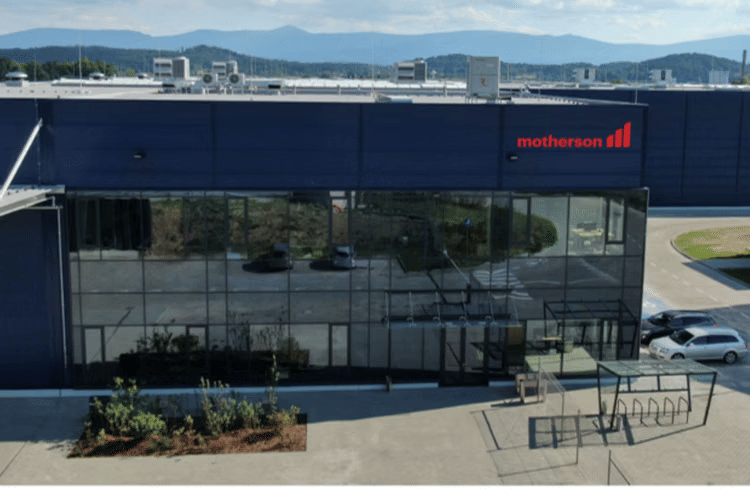
Samvardhana Motherson International Limited reported a profit after tax of Rs 856 crore for the second quarter of fiscal 2025-26, marking a 15% increase over the same period last year. Consolidated revenue for the quarter ended September 30, 2025, stood at Rs 30,173 crore, up 8.5% year-on-year.
The company’s EBITDA for the quarter was Rs 2,719 crore. The auto component manufacturer maintained its net leverage ratio at 1.1x during the period. Net leverage ratio measures how much debt a company has relative to its earnings. It’s calculated as Net Debt/EBITDA.
Varroc Engineering Reports 6.1% Revenue Growth in Q2 FY26
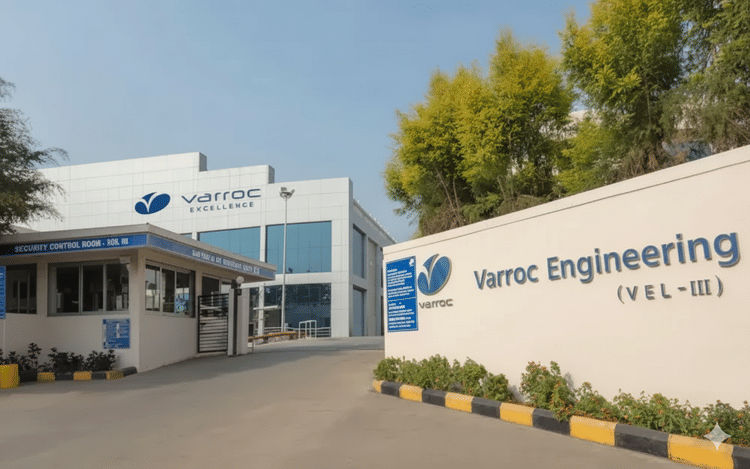
Varroc Engineering Ltd., a global tier-I auto components group, announced its financial results for the quarter ended September 30, 2025, reporting consolidated revenue from operations of ₹22,073 million. This represents a year-on-year growth of 6.1 percent compared to the corresponding period last year.
The company’s profit before tax, excluding joint venture contributions, stood at ₹912 million for Q2 FY26, marginally higher than the ₹901 million recorded in Q2 FY25.
India EV Conclave
R&D, Scale Key to Making Indian Automotive Sector Globally Competitive: MHI’s Qureshi
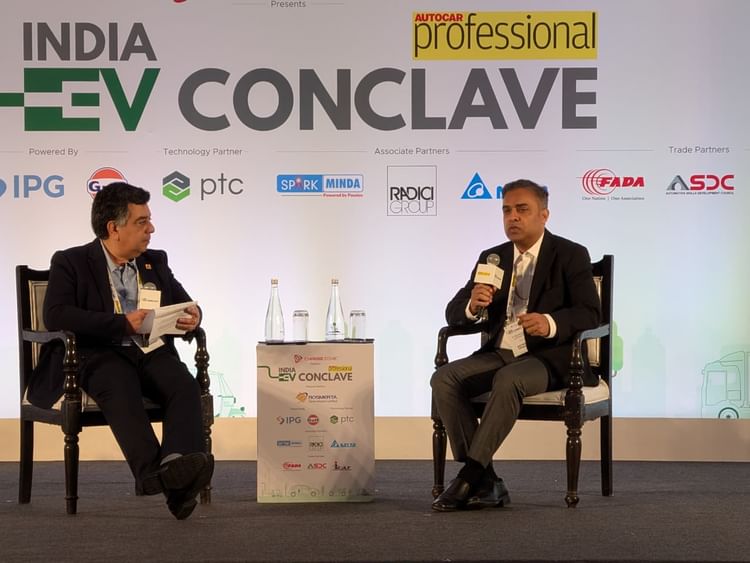
Innovation, research and development, and economies of scale represent the biggest challenges facing India’s automotive sector as it seeks to compete globally, Hanif Qureshi, IPS, Additional Secretary at the Ministry of Heavy Industries, said at the India EV Conclave on Tuesday.
In a candid assessment of India’s automotive competitiveness, Qureshi emphasized that “the real challenge is innovation and R&D to make products for different markets in the world,” while noting that both R&D spending and manufacturing scale need substantial improvement. Speaking at an event organized by Autocar Professional, he highlighted that while India has made significant strides in vehicle manufacturing, developing products tailored for diverse global markets requires significantly higher investments in research and development.
India Accelerates Rare Earth Manufacturing Push, MHI in Talks with Potential Producers
Bring in Private Electric Bus Operators to Scale EV Adoption: MHI’s Qureshi
Reopening of SPMEPCI Window May Face Delays Amid India-EU Trade Talks: Hanif Qureshi
Automotive Mission Plan 2047 statement should be out in 6 months: Hanif Qureshi

India’s automotive industry, under the guidance of the government, has started working on the Automotive Mission Plan 2047 and the mission statement is expected to be released within the next six months, according to the Ministry of Heavy Industries Additional Secretary Hanif Qureshi.
The Automotive Mission Plan is the industry’s initiative; the government only has a facilitating role in it. We have had 2 or 3 meetings and have set up sub-committees where all industries are represented. Within 6 months, this document should be out,” Qureshi said while speaking at the India EV Conclave organised by Autocar Professional.
Government in Active Discussions on ICE Vehicle Phase-Out Timeline, Says MHI’s Qureshi
India’s EV Sector Poised to Surpass NITI Aayog Targets, Says Hanif Qureshi
Tata Motors Confident of 30%+ EV Penetration by 2030, Subsidy Dependence to Decline
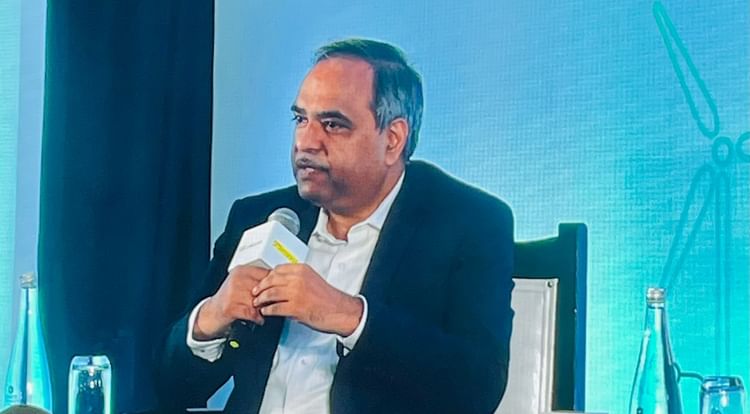
Tata Motors, India’s dominant electric vehicle manufacturer, expressed confidence in achieving more than 30% EV penetration by 2030, while indicating that dependence on government subsidies will decrease as the market matures, according to statements made at the India EV Conclave 2025.
Shailesh Chandra, Managing Director and CEO of Tata Motors Passenger Vehicles, outlined the company’s optimistic outlook for India’s EV market, projecting that penetration will double from current levels by the end of the decade. Electric vehicle penetration in the passenger car segment stood at approximately 2.5% in 2024, indicating substantial room for growth.
EV Success Will Follow, Foundation In Place: Rahul Bharti
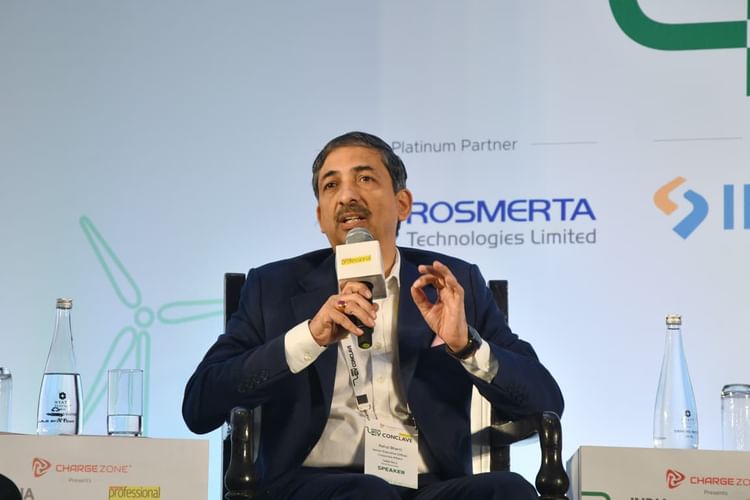
Rahul Bharti, Senior Executive Director of Corporate Affairs at Maruti Suzuki India, struck an optimistic note about India’s electric vehicle journey at the India EV Conclave, emphasizing that the country is in a critical foundation-building phase that will pay dividends in the long term.
“India frustrates you in the short term but pleasantly delights you in the long term,” Bharti told attendees at the panel discussion at Hyatt Regency Delhi. “Today a lot of foundation building has happened but foundations are not visible—a lot of facade on top will be visible tomorrow.”
Mahindra’s Gollagunta: SUVs Will Dominate EV Space, Margins to Improve with Localization

Electric SUVs are poised to become the dominant force in India’s EV market, with customer profiles evolving from environmentally conscious early adopters to mainstream buyers attracted by features and efficiency gains, according to Nalinikanth Gollagunta, CEO of the Automotive Division at Mahindra & Mahindra.
Speaking at the India EV Conclave 2025, Gollagunta outlined Mahindra’s bullish stance on the electric SUV segment, pointing to a three-fold increase in electric SUV sales as evidence of growing market acceptance.
Vikram Gulati Urges R&D Focus, Warns of Geopolitical Supply Chain Risks
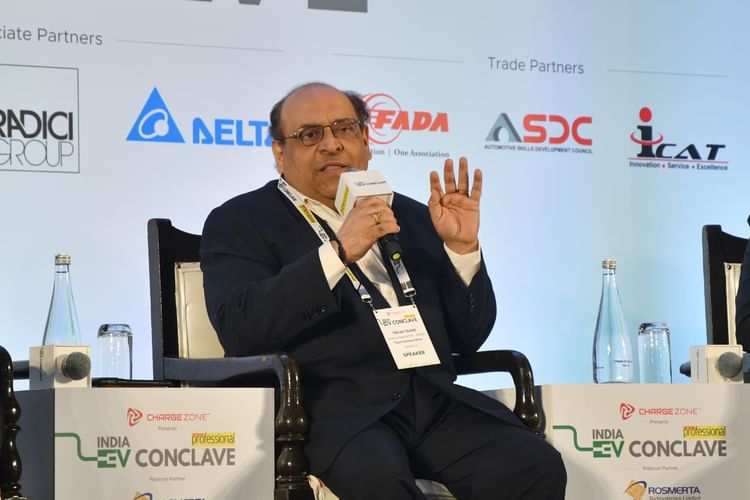
Vikram Gulati, Country Head and Executive Vice President (Corporate Affairs & Governance) at Toyota Kirloskar Motor, expressed concern about insufficient emphasis on research and development in India’s electric vehicle sector, warning that the country risks vulnerability to geopolitical supply chain disruptions.
Speaking at the India EV Conclave panel discussion, Gulati acknowledged the government’s efforts through FAME schemes, tax incentives, and GST reforms but lamented the declining priority given to R&D. “When we started out, R&D was given primary focus. Sad about R&D,” Gulati said, emphasizing that while demand-side interventions like subsidies can jumpstart market segments, sustainable growth requires supply-side interventions, charging infrastructure, and robust R&D.
JSW MG MD Mehrotra Forecasts 25-30% Market Share for EVs by 2030
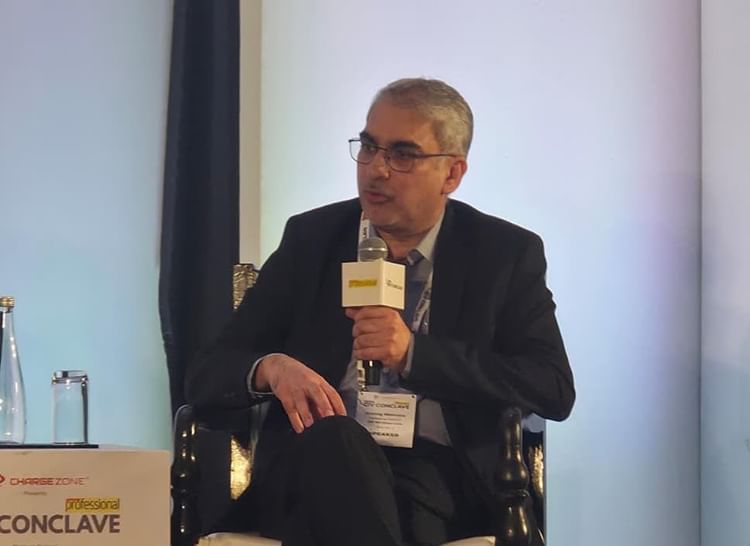
JSW MG Motor India projects new energy vehicles, including hybrids and EVs, will constitute 25-30% of India’s automotive market by 2030, significantly exceeding government projections, according to MD Anurag Mehrotra at the India EV Conclave 2025.
Mehrotra emphasized that electric vehicle adoption is rapidly expanding beyond metropolitan areas, transforming into a nationwide phenomenon rather than remaining confined to tier-1 cities as initially anticipated.
BMW MD Brar: Charging Infrastructure Crisis Threatens India’s EV Growth, Luxury Segment Shows Way Forward
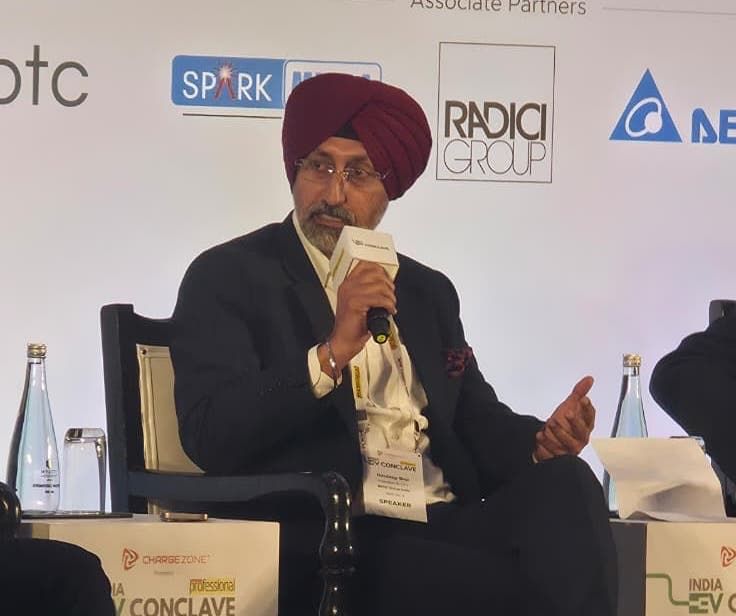
India faces a critical charging infrastructure deficit that could impede electric vehicle growth, with the current ratio of one charger for every 40 vehicles falling far short of developed market standards, according to Hardeep Brar, President & CEO of BMW Group India, speaking at the India EV Conclave 2025.
Brar highlighted that while the luxury EV segment is experiencing robust growth driven by passion rather than policy, inadequate charging infrastructure remains the primary barrier to broader EV adoption across all segments.
Mercedes-Benz MD Iyer Says On-Road Price Parity Essential for EV Growth

Taxation policies have a disproportionately large impact on luxury electric vehicle sales, with on-road price parity between EVs and internal combustion engine vehicles serving as the critical tipping point for market adoption, according to Santosh Iyer, MD & CEO of Mercedes-Benz India, at the India EV Conclave 2025.
Iyer emphasized that while environmental considerations matter, pricing dynamics ultimately determine purchase decisions in the luxury segment, with taxation structure playing the decisive role.
Reliance’s Nitin Sheth Predicts EV Industry Will Mirror Telecom Revolution
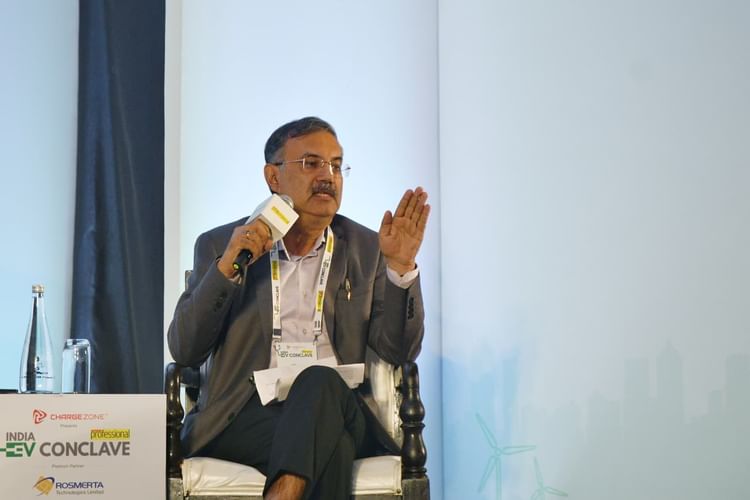
Nitin Sheth, CEO of New Mobility at Reliance Industries, painted a transformative vision for India’s electric vehicle sector, predicting it will undergo a disruption similar to the telecommunications revolution, where the focus shifts from hardware to energy provision and service quality.
“The EV industry will go through the same phase that telecom went through. The EV industry will become agnostic to hardware over next 6-7 years—it will be about who is giving better energy,” Sheth told attendees at the India EV Conclave panel discussion.
India EV Industry Leaders Call for Enhanced Charging Infrastructure, Used EV Market Development
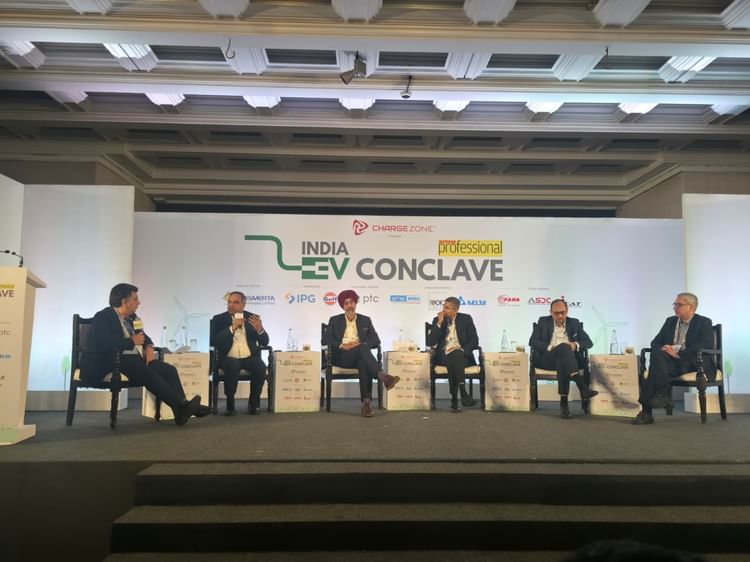
Industry leaders at Autocar Professional’s India EV Conclave 2025 emphasized the urgent need for stronger charging infrastructure and a more robust used EV market to sustain India’s electric vehicle growth momentum, with forecasts of EV penetration reaching 25-30% by 2030.
Speaking at the event at Hyatt Regency Delhi, executives from Tata Motors, Mahindra & Mahindra, JSW MG Motor India, BMW, and Mercedes-Benz outlined both opportunities and challenges facing India’s rapidly evolving EV sector, which currently accounts for approximately 7.5% of total vehicle sales.
Industry Leaders Highlight Skilling Crisis in India’s EV Transition

As India accelerates its electric vehicle transition, industry leaders at the India EV Conclave warned that inadequate workforce skilling could become a major bottleneck, with training for technicians and service personnel consistently treated as an afterthought by both government and manufacturers.
Vinkesh Gulati, Chairperson of the Automotive Skills Development Council (ASDC), was blunt in his assessment: “We are in a nascent stage in terms of skilling in EV space. The problem is with both the government and OEMs. Whenever we plan anything, be it auto mission plan and products, skilling is the last thing we plan.”
Industry Leaders Sound Alarm on China Supply Chain Dependence at India EV Conclave

Top executives from India’s electric vehicle sector issued a clarion call for supply chain diversification at the India EV Conclave, warning that heavy dependence on China for critical components poses long-term risks to the industry’s global competitiveness.
Eric Vas, President of EVs at Bajaj Auto, delivered a stark warning during the panel discussion on ‘Mapping India’s EV Success Stories Across Segments’ at Hyatt Regency Delhi. “If we take cells which are not competitive, we will lose globally,” Vas stated, emphasizing the urgent need to de-risk from what he termed “hostile players.”
EV Industry Leaders Call for Deep Localization, Software Focus at India EV Conclave
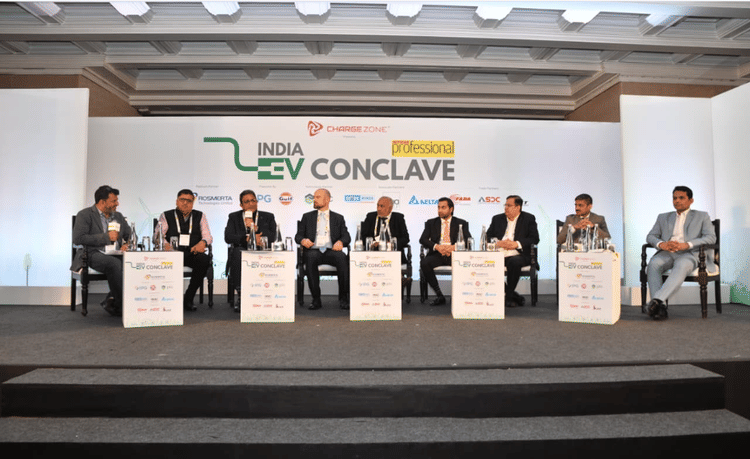
Industry leaders at Autocar Professional’s India EV Conclave emphasized the urgent need for deep localization of components and prioritizing software development to make India’s electric vehicle ecosystem globally competitive.
Speaking at a panel discussion on “Building the EV Value Chain: The Road to Deep Localisation”, executives from AUMOVIO, Lumax Auto, Gulf Oil, and other major players outlined their strategies for reducing import dependence while highlighting persistent challenges.
BYD India Confident of 20% EV Penetration by 2030 Despite Supply Chain Headwinds
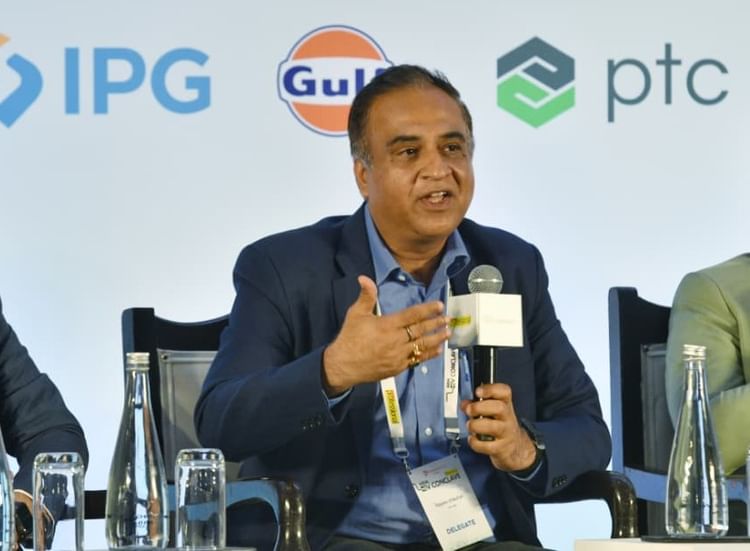
Chinese automotive giant BYD’s India operations expressed optimism about the country’s electric vehicle trajectory, predicting that passenger car EV penetration will reach 20 percent by 2030, as the company focuses on addressing consumer concerns beyond just awareness.
Rajeev Chauhan, Head of Electric PV Business at BYD India, told attendees at the India EV Conclave that the company has been strategically filling market gaps since entering India three and a half years ago. “We focused on specific segments. Now in the last one year, we have been filling the white spaces,” Chauhan said.
E-Bus Penetration to Reach 20-30% by 2030, Says Olectra CEO at India EV Conclave
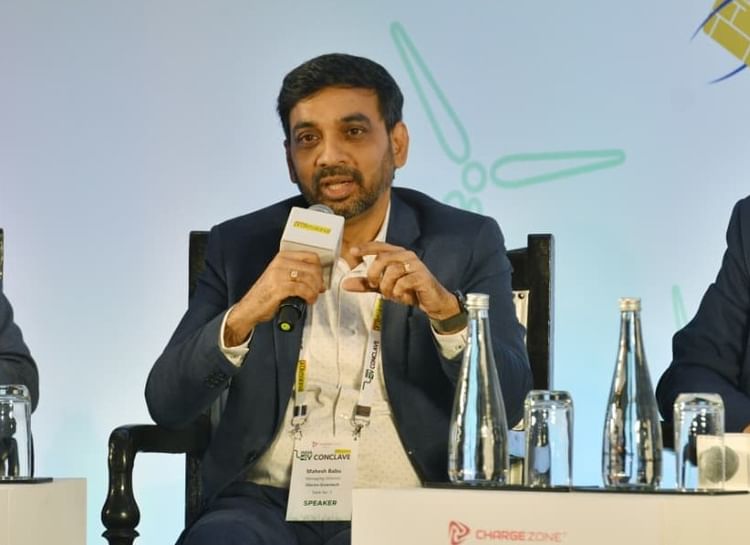
India’s electric bus segment is poised for steady but measured growth, with penetration levels expected to reach 20-30 percent by 2030, according to Mahesh Babu, CEO of Olectra Greentech, speaking at the India EV Conclave.
“By 2030, the EV penetration levels in buses will largely remain around 20-30 percent,” Babu stated during the panel discussion on mapping India’s EV success stories across segments.
The bus segment has shown promising growth in recent years. Electric bus sales in India experienced substantial growth of 59 percent in calendar year 2024, reaching 3,822 units. The PM E-DRIVE scheme, launched in October 2024 with a total outlay of Rs 10,900 crore, allocated Rs 4,391 crore specifically for electric buses to drive urban public transport sustainability.
Gulf Oil’s EV Charge
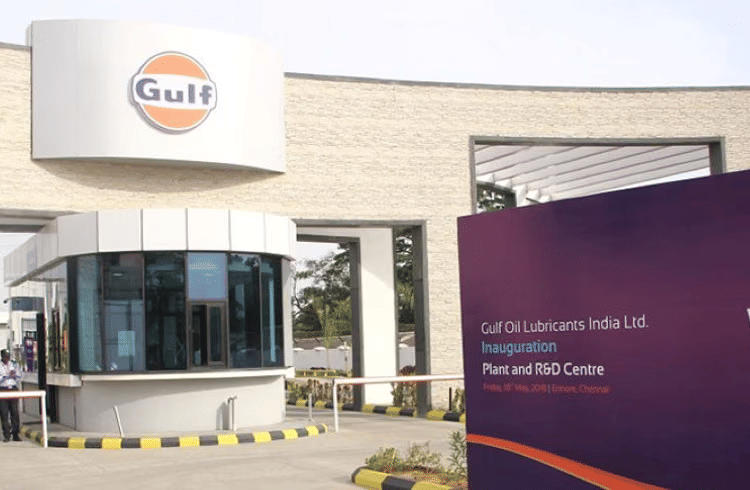
India’s electrification journey is forcing traditional players to reinvent their core business models. One notable example is Gulf Oil, a company historically rooted in lubricants which has strategically moved into the high-tech, service-oriented world of electric vehicle (EV) charging.
Ravi Chawla, MD and CEO of Gulf Oil Lubricants India, detailed this pivot and the practical realities of achieving self-reliance in the nascent Indian EV infrastructure market during a recent panel discussion at the India EV Conclave held in Delhi.
India’s fabless future lies in mechatronics integration’ — Lumax Auto’s CEO on EV Industry Strategy
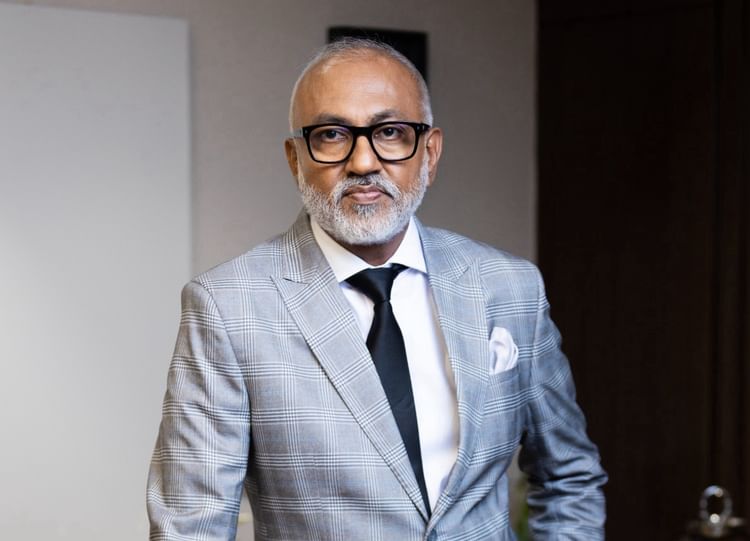
India’s drive toward developing a robust electric vehicle (EV) supply chain faces formidable challenges, particularly for indigenous component suppliers navigating global competition and acute raw material scarcity. Speaking at the India EV Conclave, organised by Autocar Professional, Vikas Marwah, CEO of Lumax Auto Technologies, offered a stark, candid assessment of the road to localization, concluding that despite admirable governmental intent, the current ecosystem is hindered by a lack of central strategic direction.
For Indian Tier 1 suppliers like Lumax Auto, the task of competing against established global players becomes even more challenging, considering their lack of global scale as standalone entities.
Entry & Exits
Torsten Schmidt Named Managing Director & CEO of Daimler India Commercial Vehicles

Daimler India Commercial Vehicles (DICV) has announced a leadership change with Torsten Schmidt set to become the company’s new Managing Director and CEO in early 2026. Schmidt will succeed Satyakam Arya, who has been appointed as the designated President and CEO of Hino Motors in Japan.
Schmidt, 53, currently serves as Chief Financial Officer of Mercedes-Benz do Brasil and brings 28 years of experience with Daimler since joining the organization in 1997. He has held senior positions across multiple continents, including Germany, India, Japan, and Brazil, gaining expertise in business transformation and the entire commercial vehicle value chain.
Bridgestone India Names Rajarshi Moitra as New Managing Director
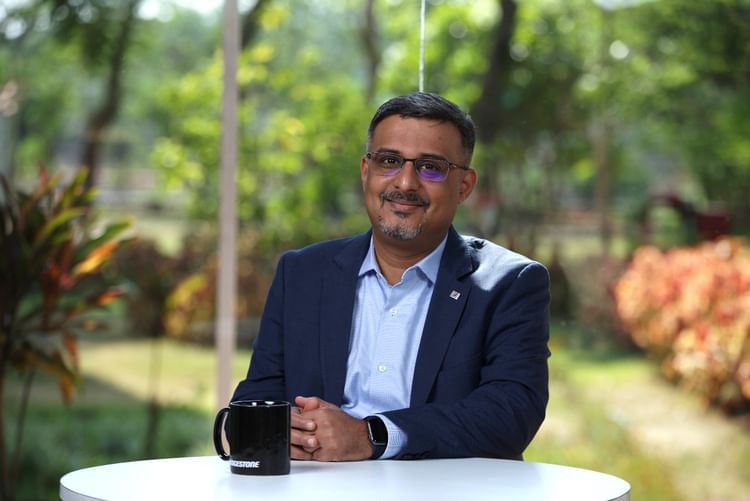
Bridgestone India has announced a leadership transition, with Rajarshi Moitra set to assume the role of Managing Director effective January 1, 2026.
Moitra, who currently serves as Deputy Managing Director, will succeed Hiroshi Yoshizane, who has led Bridgestone India since January 2024. Yoshizane will be promoted to Vice President and Senior Officer of Bridgestone Corporation while continuing as Group President of Bridgestone Asia Pacific, India, China (BSAPIC), a position he has held since May 2025.